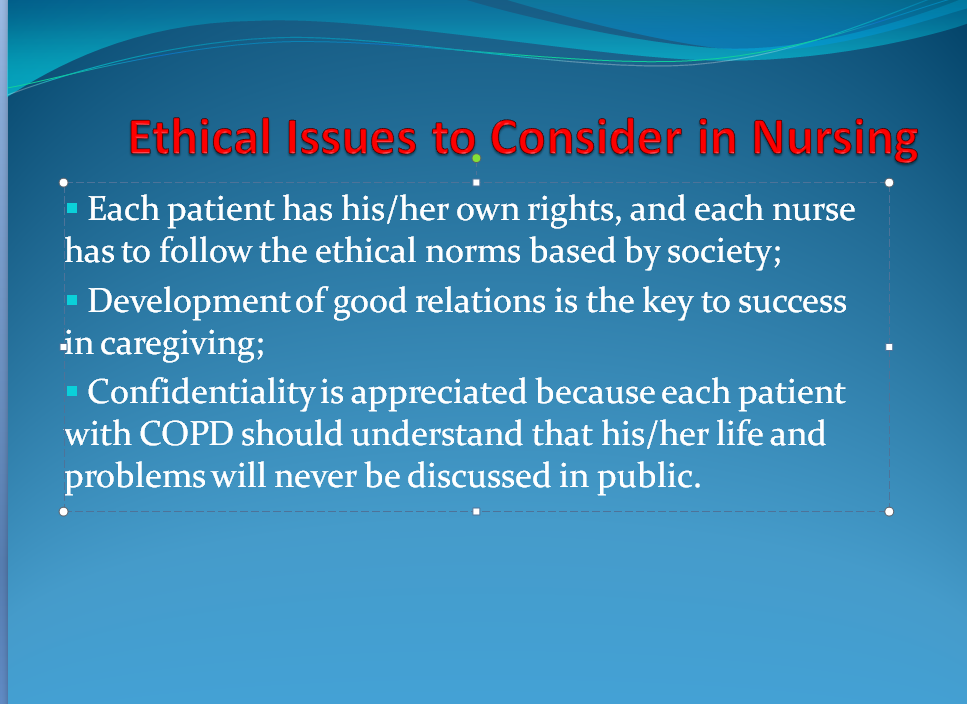Methods used to evaluate effectiveness of the proposed solution. The proposed solution to the problem that is based on lack of identity and appropriate nursing practice and students’ inabilities to use and develop their skills in a right way has to be evaluated thoroughly as evaluation and improvement of the outcomes is an important step that defines the quality of caregiving offered by nurses (Fineout-Overholt & Johnston, 2007). For a long period of time, lack of identity and possibilities to apply theoretical knowledge to practice is considered to be one of the main problems that has to be discussed (Kreml, 2003), this is why it seems to be rational to use the following methods in order to analyze whether the strategies chosen are effective: surveys of patients’ attitudes to care provided by nurses, beginning nurses’ opinions about the working conditions, and evaluation of the situation before and after the implementations of the working system are made.
Variables to be assessed when evaluating project outcomes. There are several variables in the project under consideration, and each of them plays an important role in the analysis of theoretical and practical aspects (Melnyk & Fineout-Overholt, 2010). They are: the nature of patients’ problems (some patients with COPD may face various psychological or social challenges), nurses’ attitudes (the importance of how future nurses define their roles in society and hospital), and quality of education offered by medical institutions (it happens that not all academic institutions provide students with the required portion of knowledge and abilities to develop their professional skills). The assessment of such variables is integral for the project because the quality of caregiving depends of the way of how nurses understand their duties and what steps they are ready to take to improve the system.
Tools which are necessary to educate project participants. In this project, it is necessary to pay attention to the tools with the help of which the evaluation of the project outcomes is possible. The idea to focus on nursing practice during education is powerful indeed, and the following tools will help to improve the strategy: PowerPoint presentations (Figure 1) made by the participants of the program (each participant introduces the goals set, the methods used, and the attitude to the activities offered), questionnaires offered to the nurses and patients (the evaluation of the opinion of each participant will help to define the weak and strong aspects of the strategy), and special training courses on a weekly basis by means of which nurses are free to discuss various situations, ways of treatment and communication with patients, and improve their knowledge considering the current innovations.

Assessment tool to evaluate project outcomes. One of the most effective and easy-to-create assessment tools for the strategy discussed in this paper is the creation of written reports. The main purpose of the strategy implemented is to define which activities may influence the quality of care provided by beginning nurses and professionals, to promote the cooperation between nurses who have already got the necessary portion of practice and who are in need of additional help. This is why each participant of the strategy that aims at improving nurses’ identity and practical skills by means of particular changes in the education system is required to introduce a written report that contains some statistical data as well as person’s attitude to the improvements made.
Disseminating Evidence
A strategy for disseminating project results to key stakeholders. Dissemination of the results obtained is regarded as an important step of EBP (Walsh, 2010) because all participants should understand that their activities and ideas may change and make better the current system of caregiving. Key stakeholders like educators, nurses, and administrators perform the central role in the successful revision of the results. To involve these people into the project it is necessary to make use of statistics and real-life facts. Interviews with ordinary people may help to see that sometimes patients are not able to use medical care in time due to a variety of reasons, and medical staff as well as educators may change the situation. First, nurses should demonstrate their desire to provide patients with care. However, they can do it only in case they get the required portion of knowledge and practice, this is why the role of educators and administrators becomes also important. People should not be afraid of medical care provided, and key stakeholders are the ones who may influence the results.
A strategy for disseminating projects to greater nursing community. Without any doubt, nurses should have solid backgrounds to provide patients with different types of care (DiCenso, Guyatt, & Ciliska, 2005). However, personal problems, uncertainty, and lack of practice may prevent the process of care delivery (Chitty, 2005), this is why nursing community has to be involved into the project offered. Not all nurses may allow themselves expensive education and training programs with the help of which they may improve their skills and become sophisticated nurses. Statistical data, personal opinions of patients, and possible perspectives for the nearest future may be used as the main stimuli to disseminate the project to greater nursing community.
References
Chitty, K.K. (2005). Professional nursing: Concepts & Challenges. St. Louis: Elsevier Health Sciences.
DiCenso, A. Guyatt, G., & Ciliska, D. (2005). Evidence-based nursing: A guide to clinical practice. St Louis: Elsevier Health Sciences.
Fineout-Overholt, E & Johnston, L. (2007). Evaluation: An essential step to the EBP process. Worldviews on Evidence-Based Nursing, 4(1), 54-59.
Kreml, B.B. (2003). Nursing problem. Health Affairs, 22 (2), 282.
Melnyk, B. & Fineout-Overholt, E. (2010). Evidence-based practice in nursing and healthcare: A guide to best practice. (2nd ed.) Philadelphia: Lippincott Williams & Wilkins.
Walsh, N. (2010). Dissemination of evidence into practice: Opportunities and threats. Primary Health Care, 20(3), 26-30.